

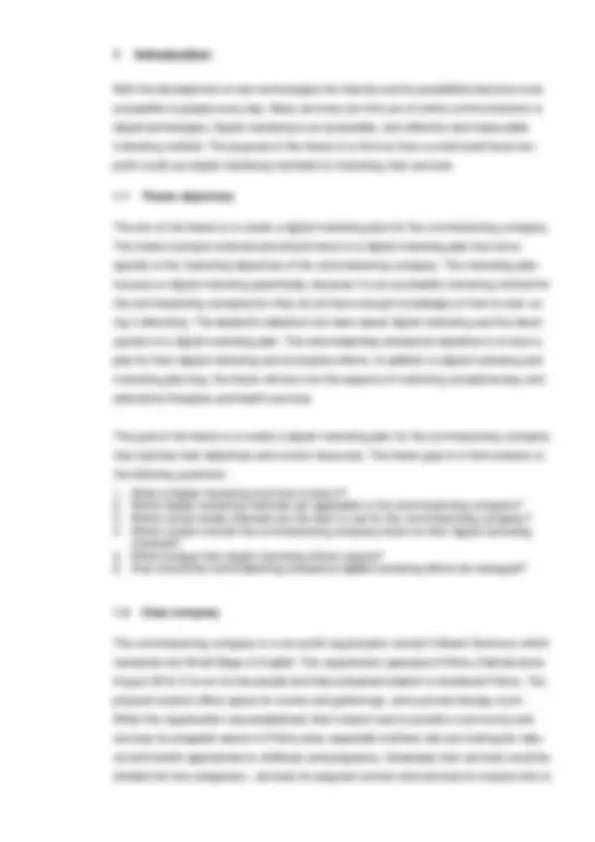

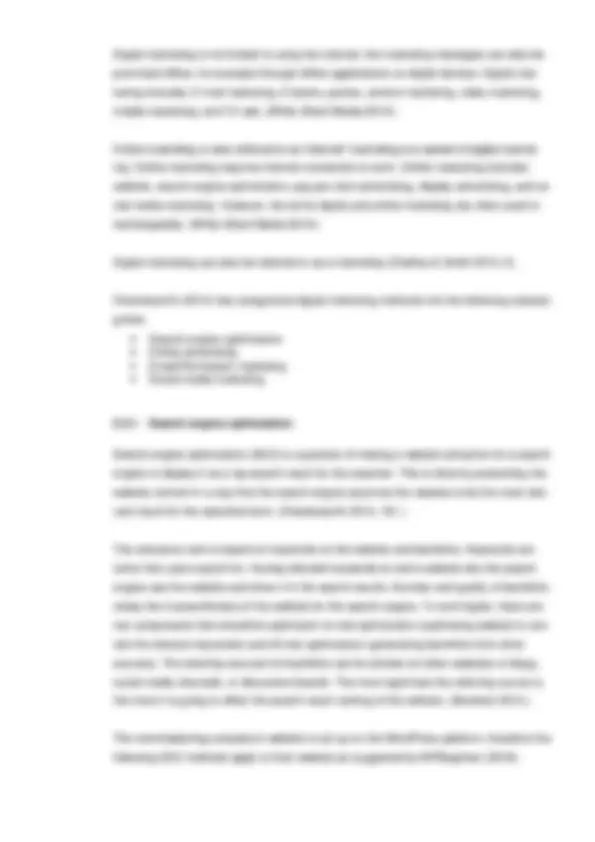
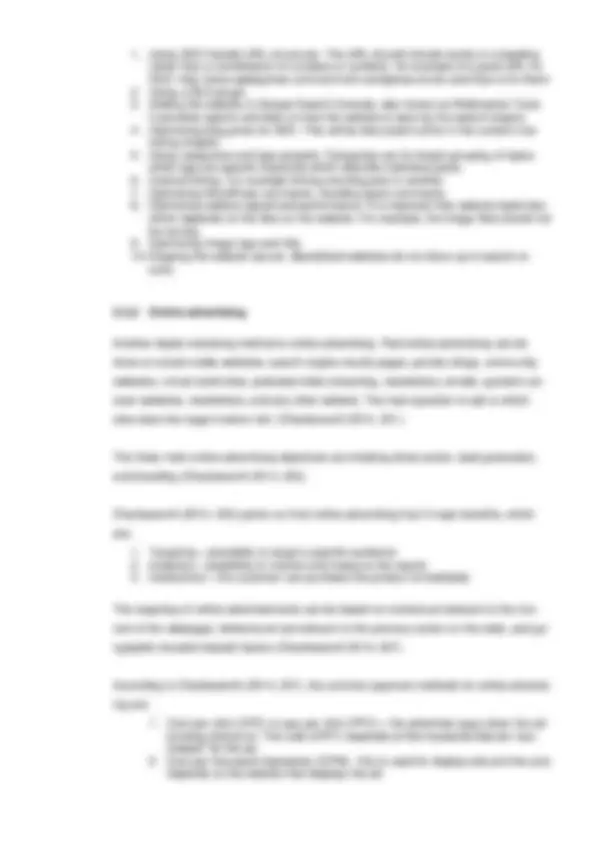
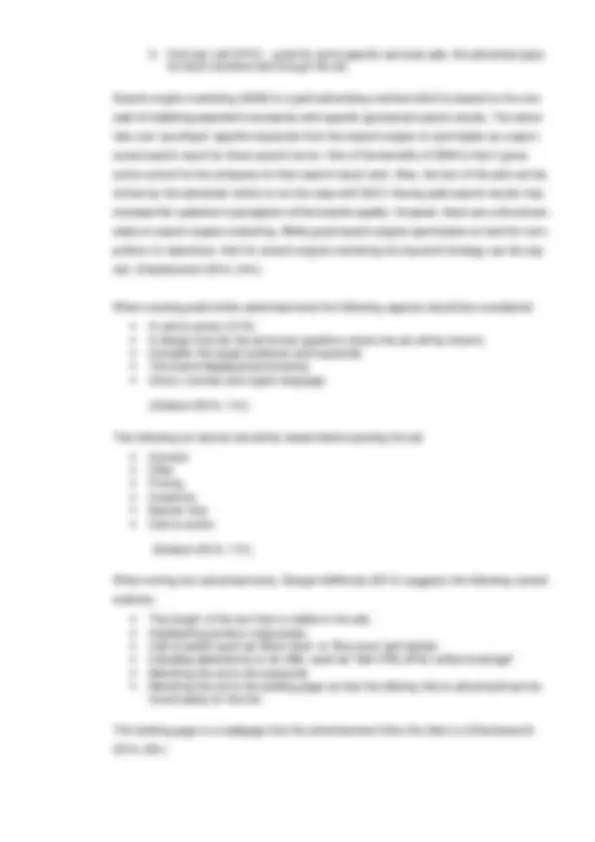
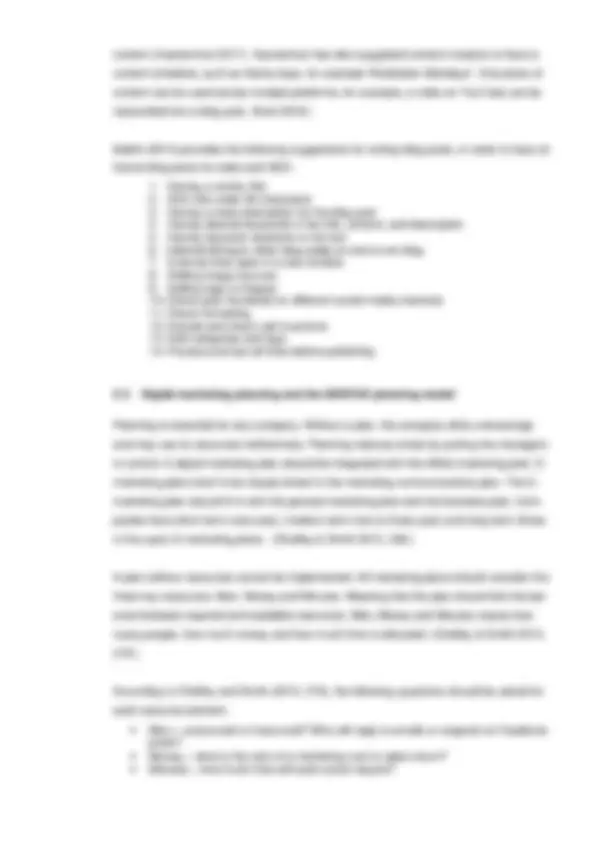
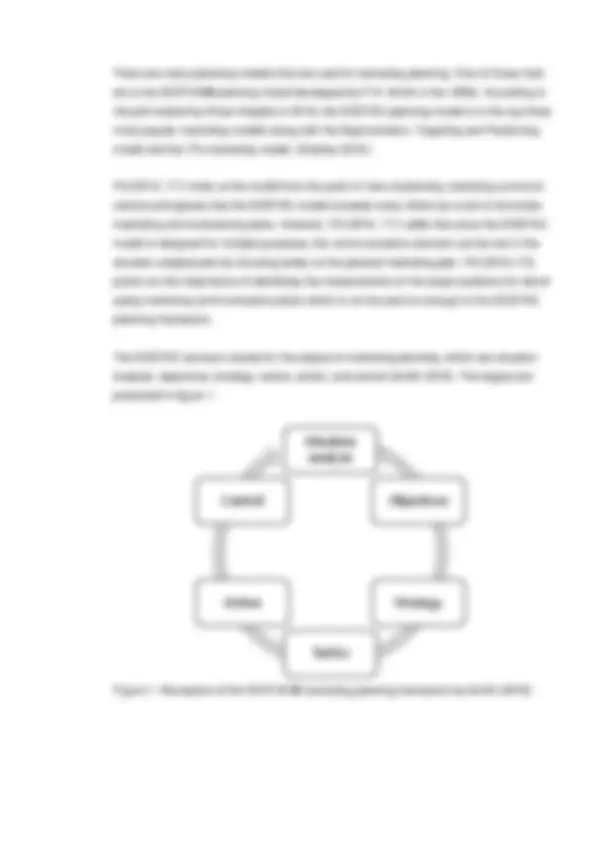
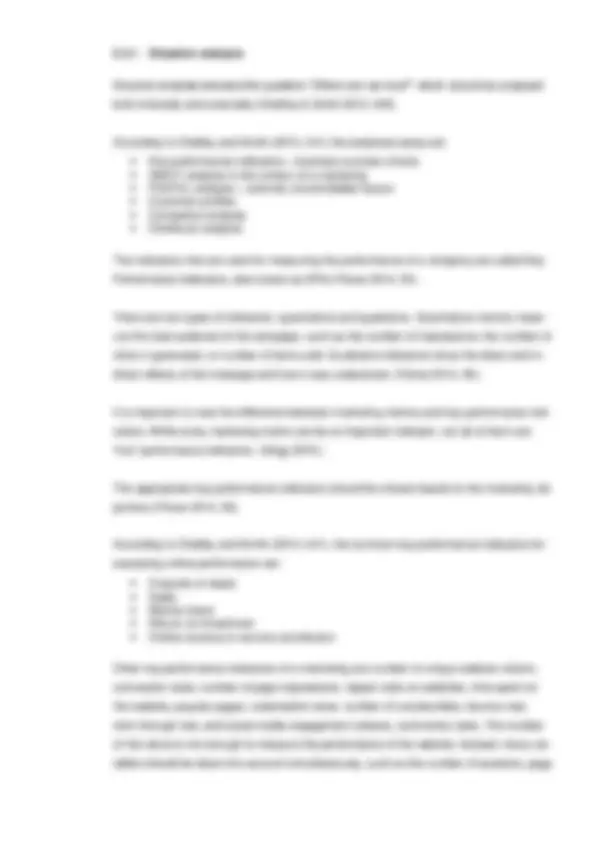
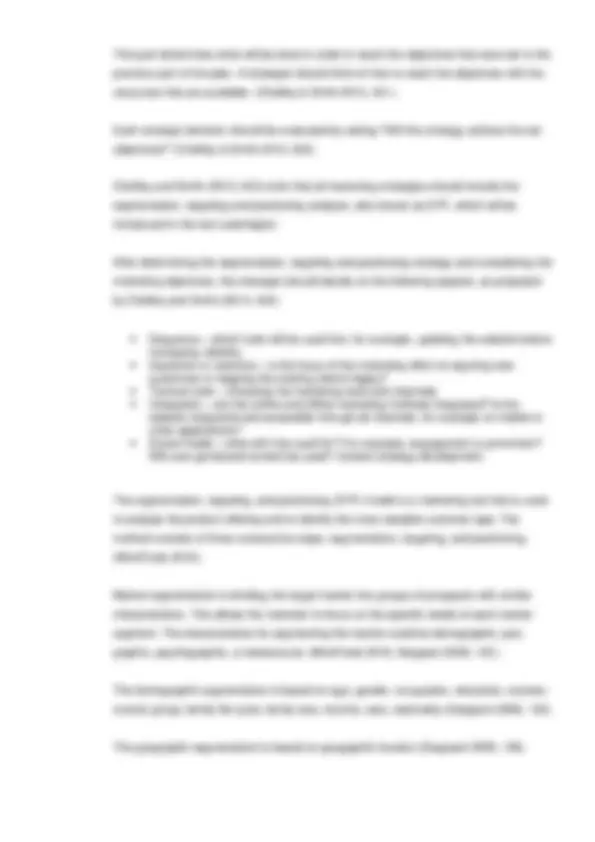
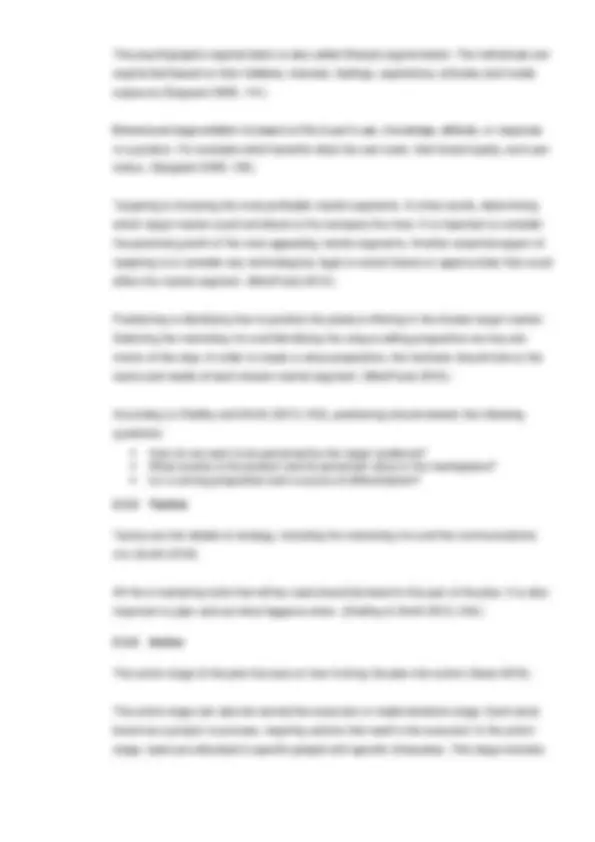
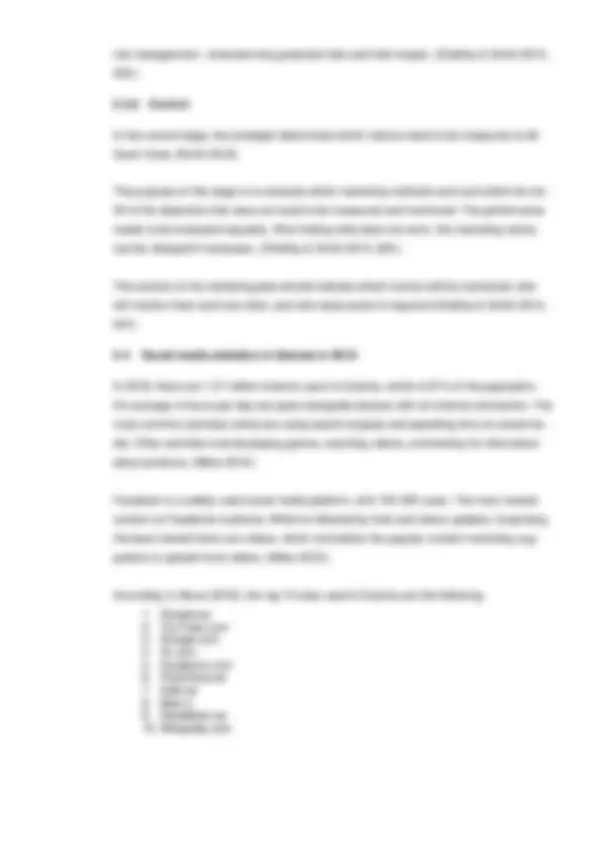
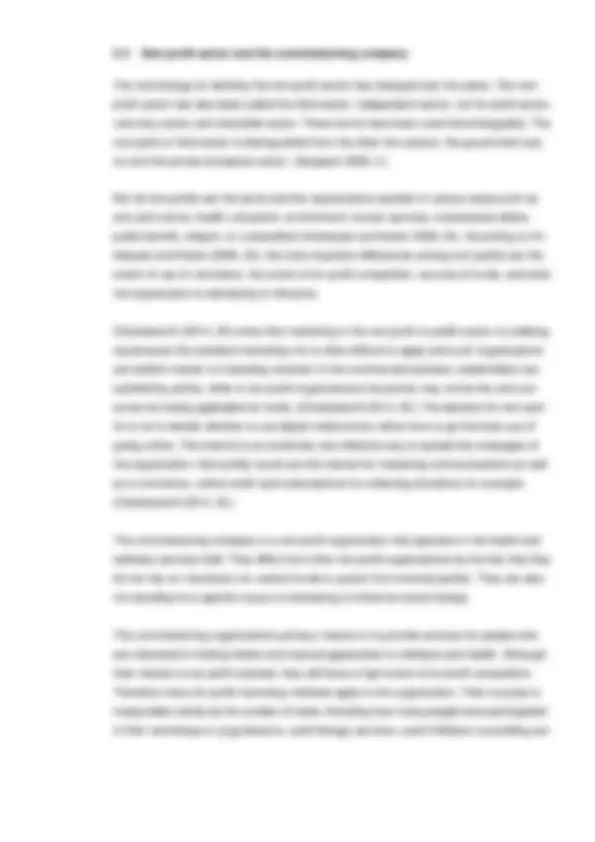

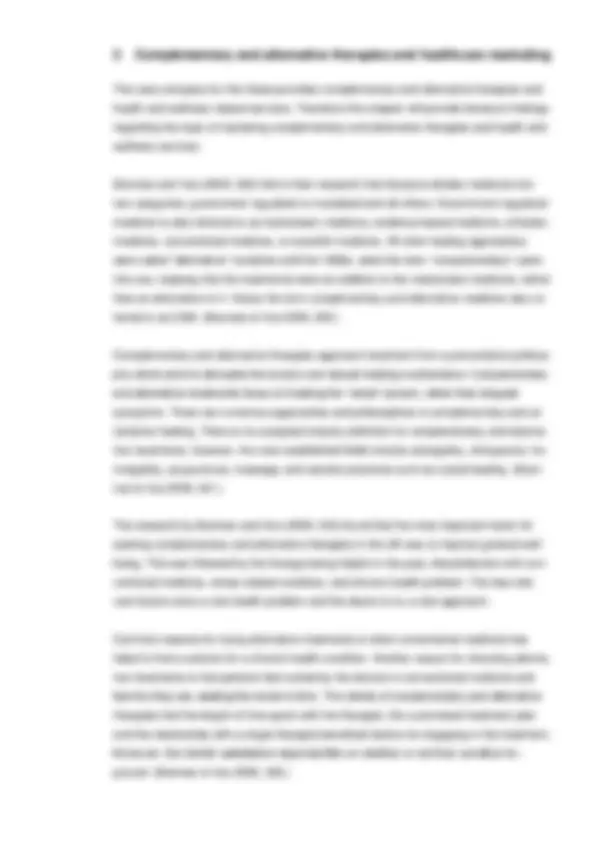
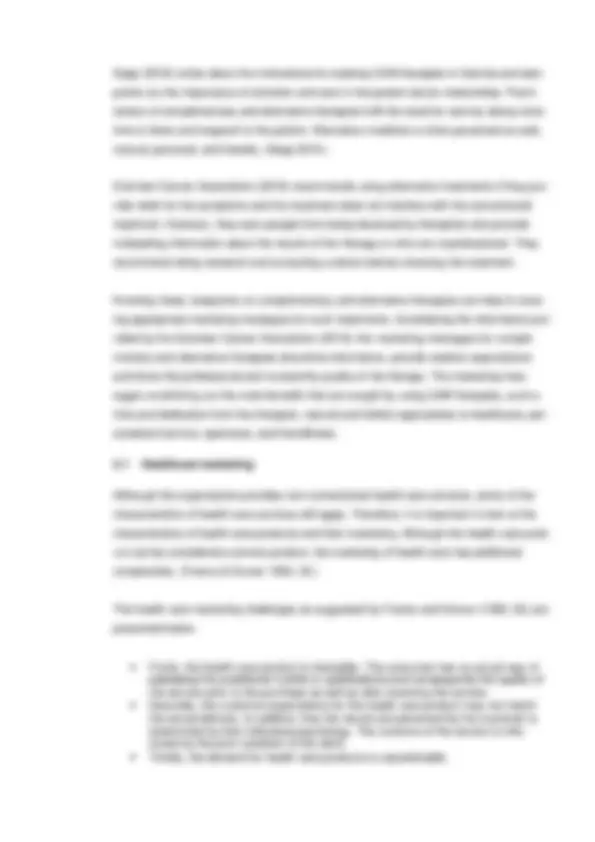
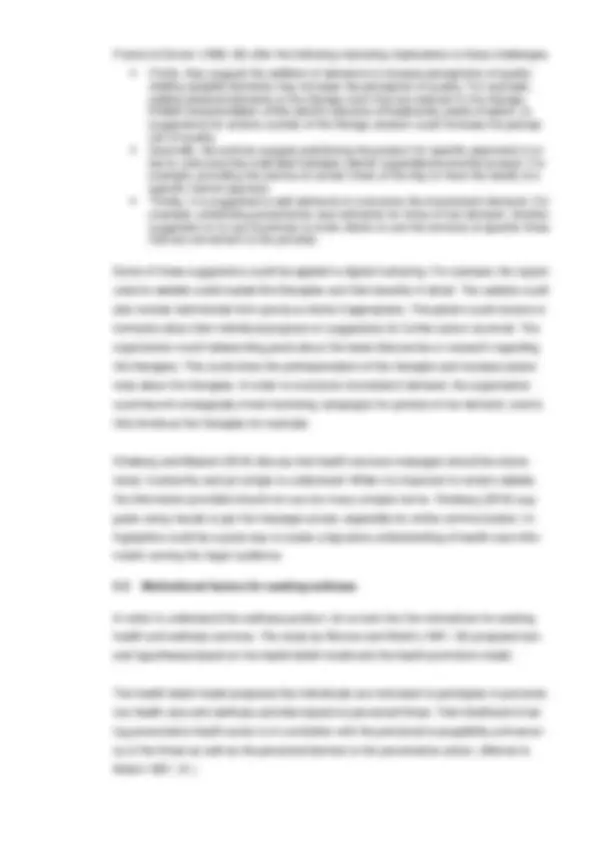

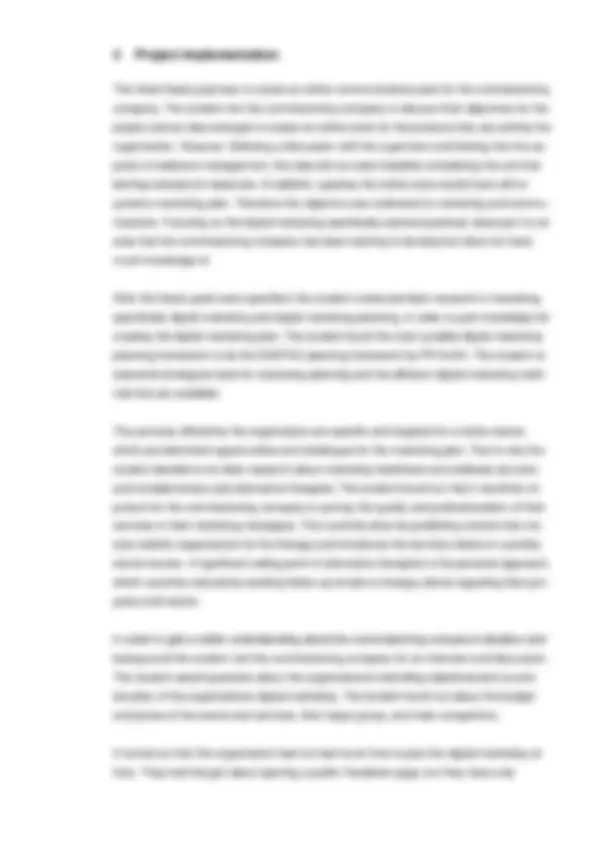




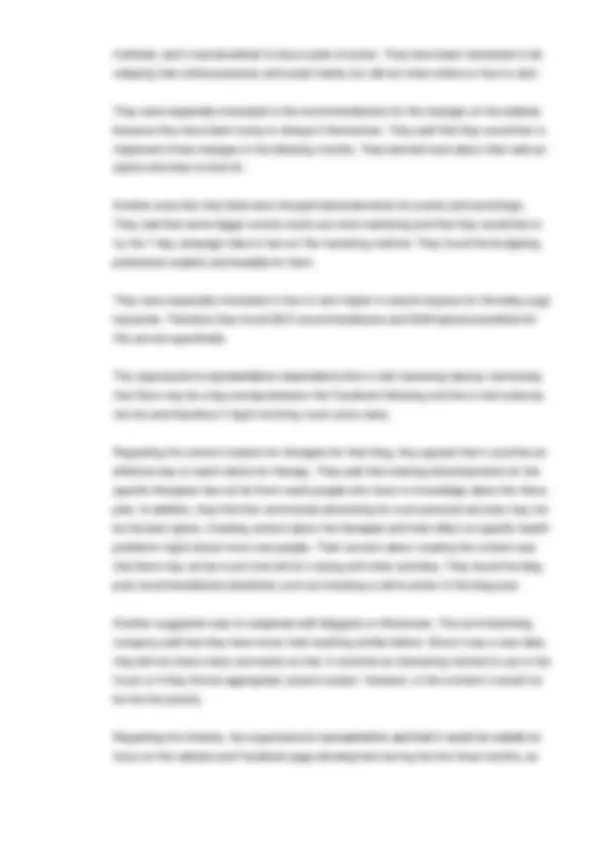




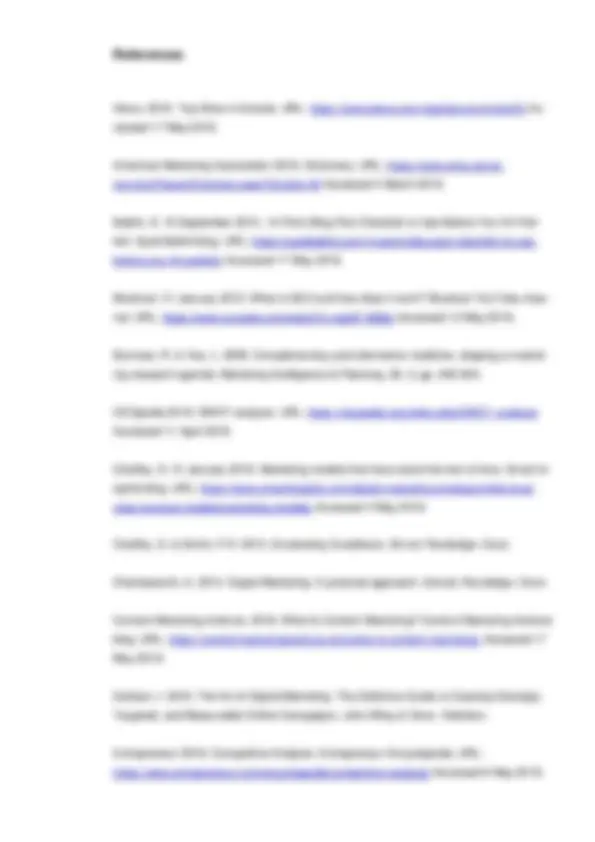

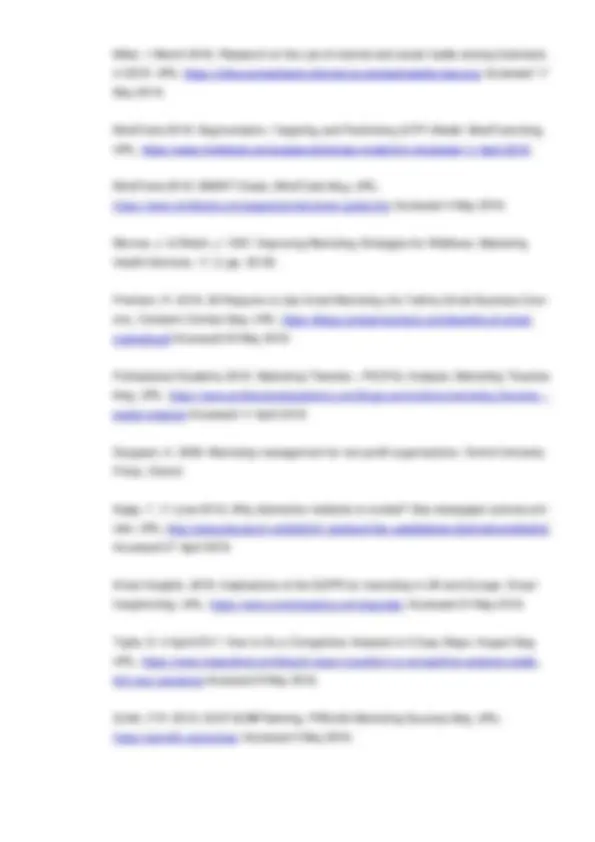




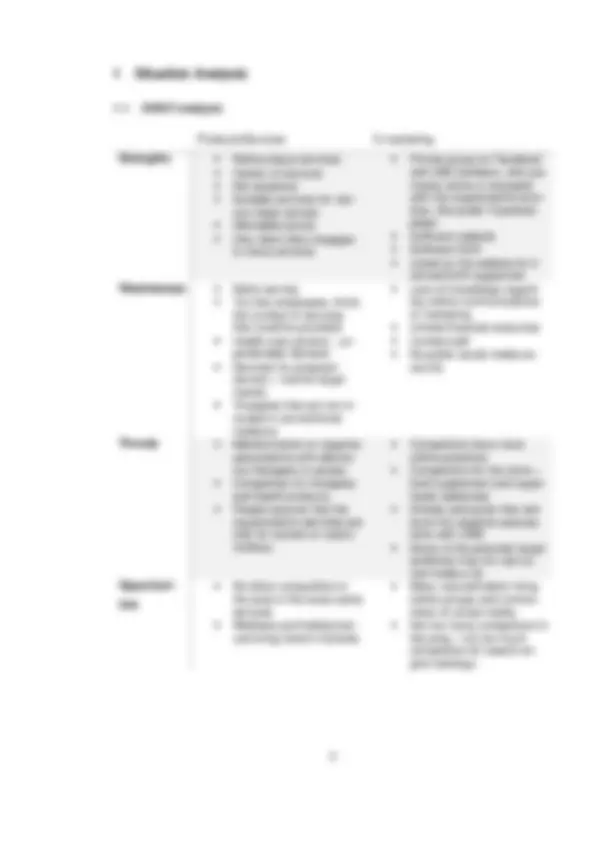
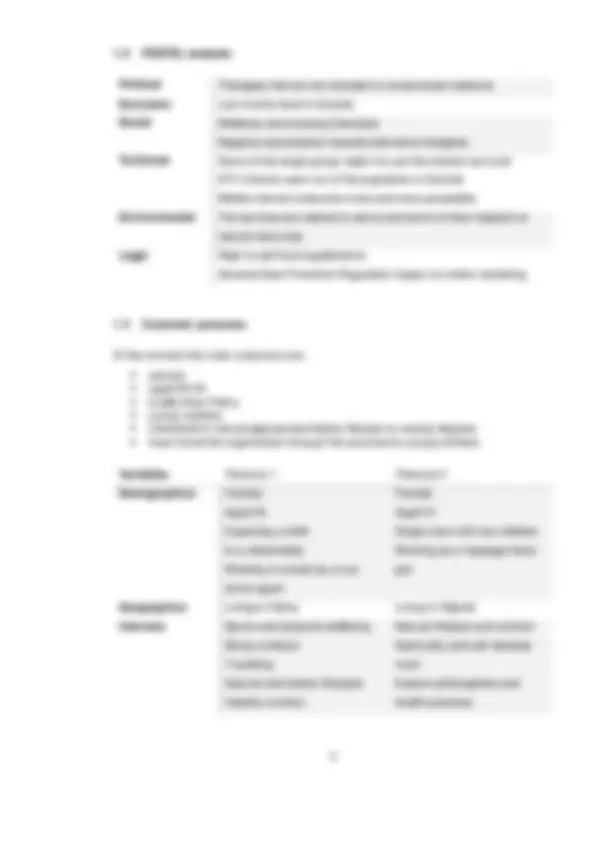
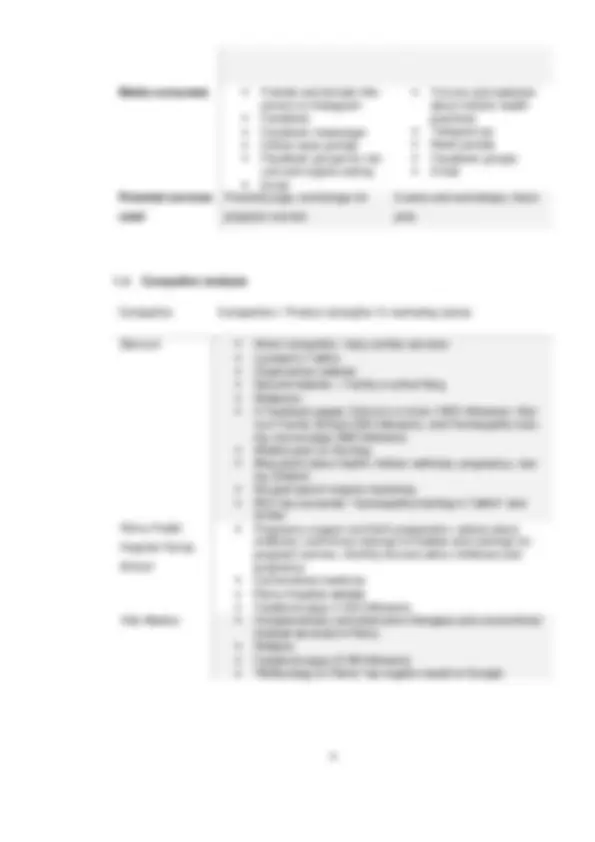
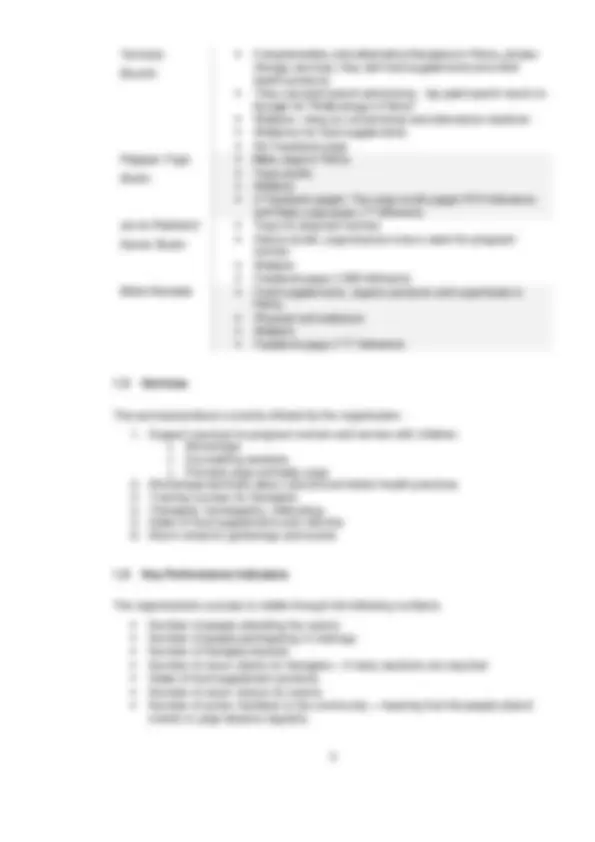
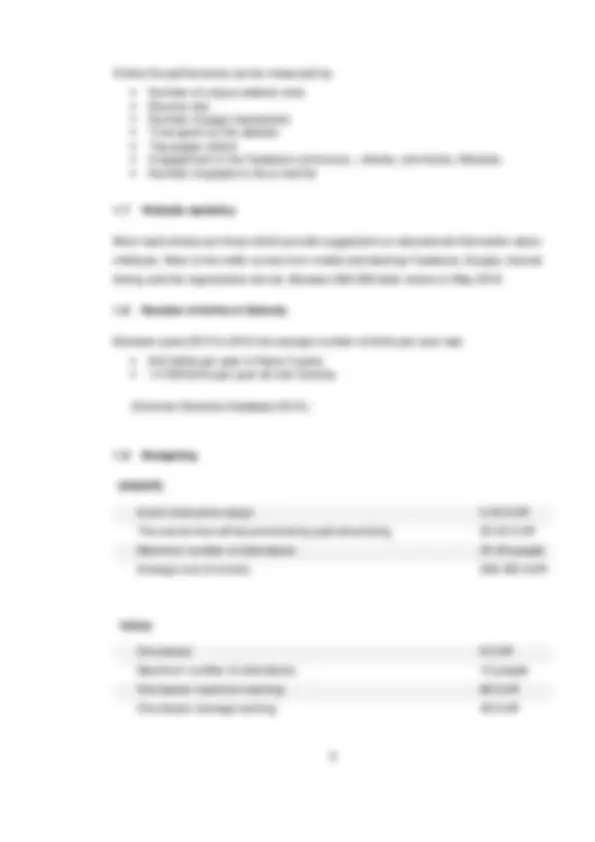
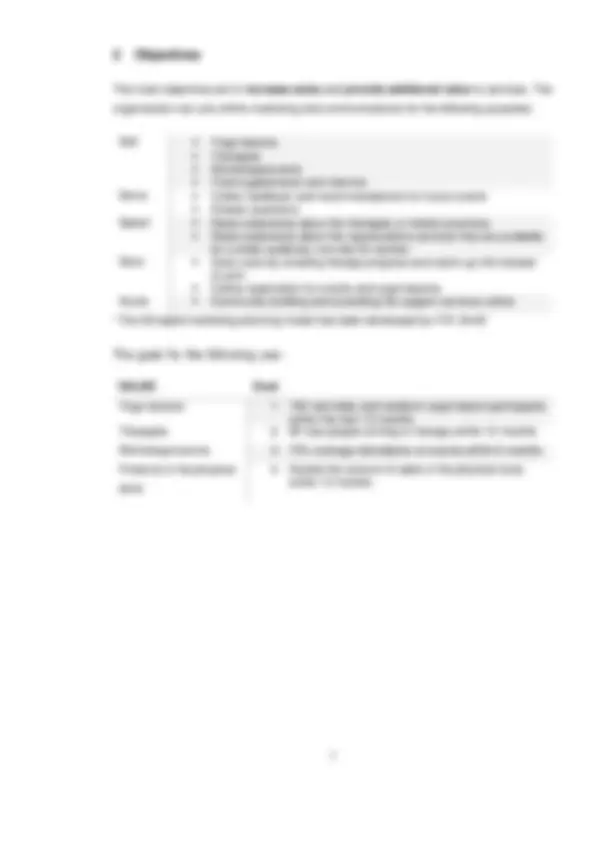
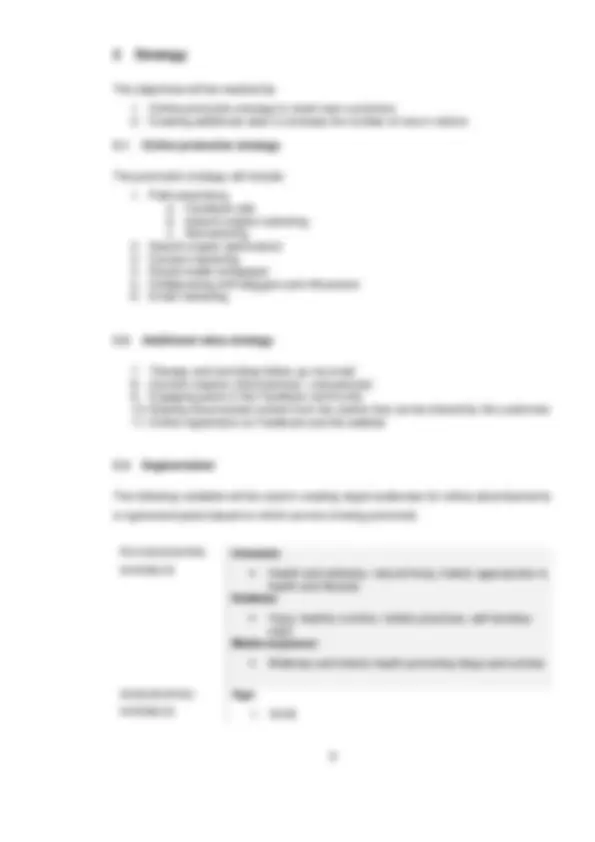
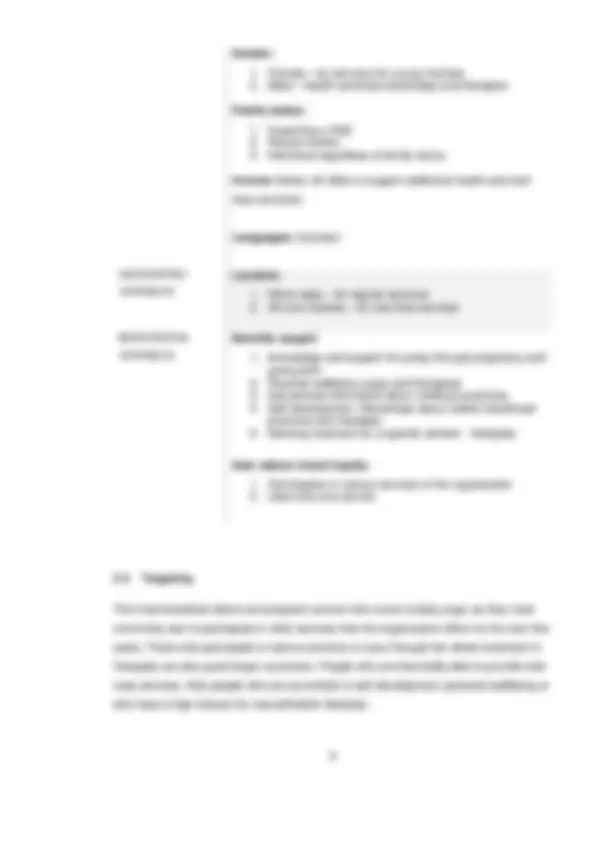
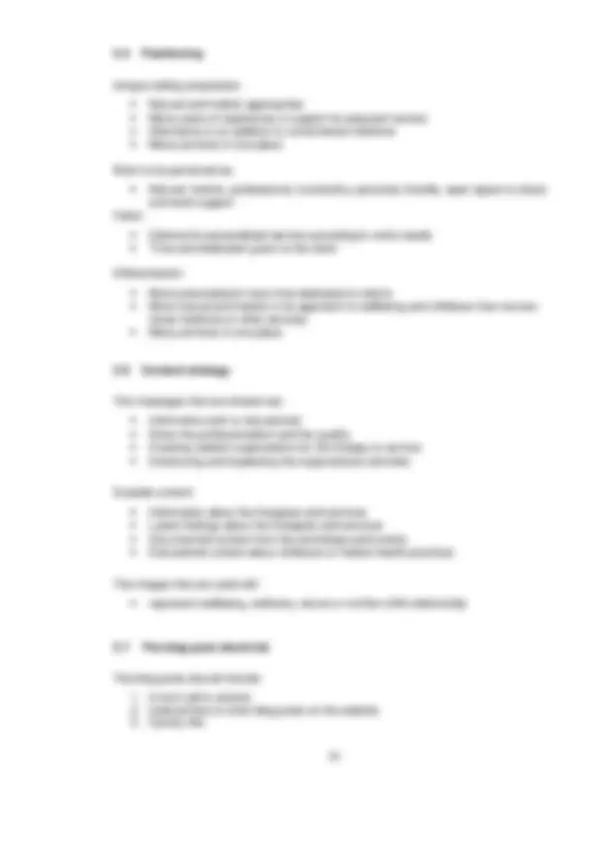

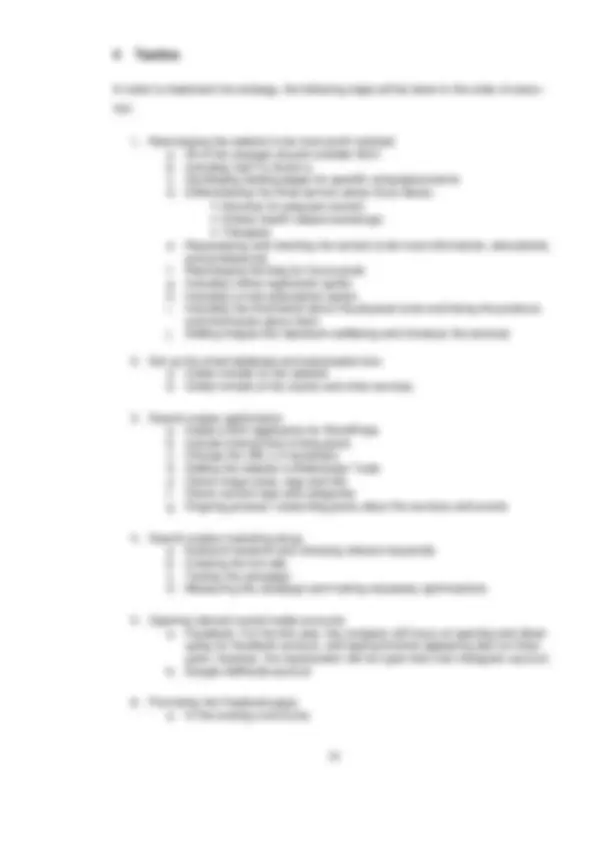

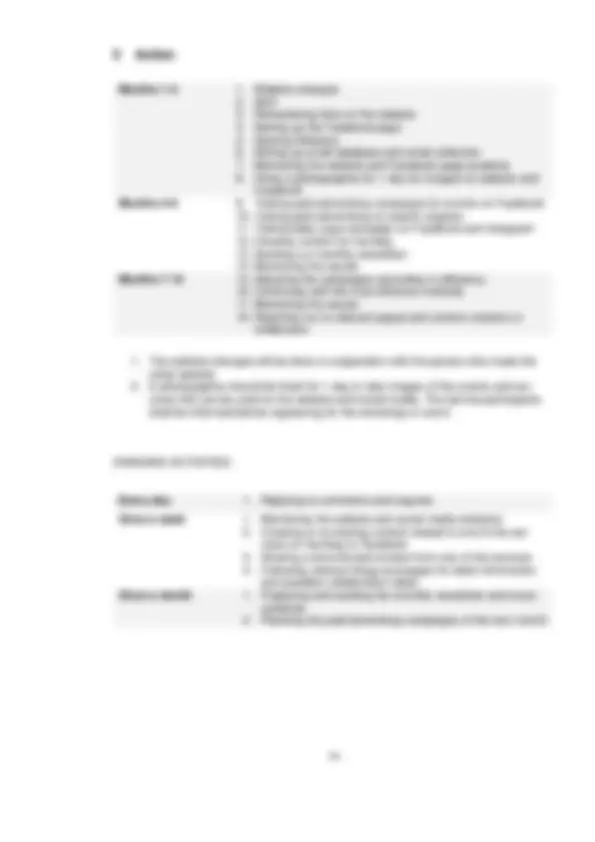
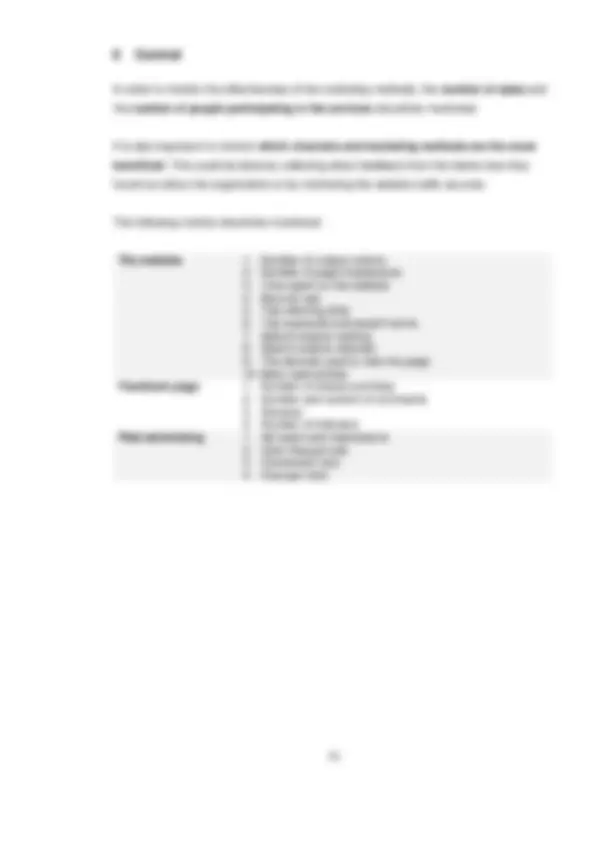
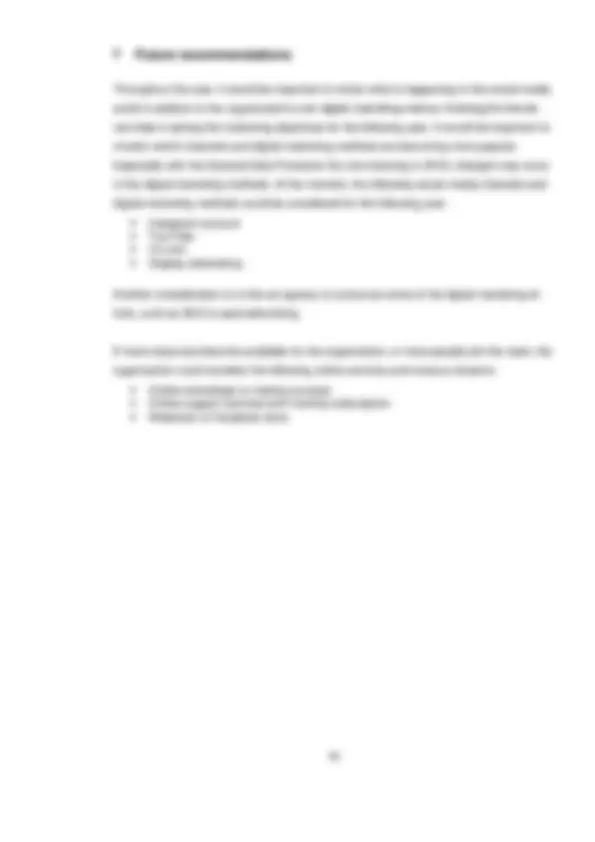


Study with the several resources on Docsity

Earn points by helping other students or get them with a premium plan


Prepare for your exams
Study with the several resources on Docsity

Earn points to download
Earn points by helping other students or get them with a premium plan
Community
Ask the community for help and clear up your study doubts
Discover the best universities in your country according to Docsity users
Free resources
Download our free guides on studying techniques, anxiety management strategies, and thesis advice from Docsity tutors
An overview of digital marketing for health and wellness services, including search engine optimization (SEO), social media marketing, and content marketing. the importance of digital marketing for small businesses in the health sector and outlines key performance indicators. It also includes a SWOT analysis and customer personas.
What you will learn
Typology: Lecture notes
1 / 58

This page cannot be seen from the preview
Don't miss anything!



















































Kristi Medell
Bachelor’s Thesis Degree Programme in Experi- ence and Wellness Manage- ment 2018
Author(s) Kristi Medell Degree programme Degree programme in Experience and Wellness Management Report/thesis title Digital marketing plan for a non-profit organization
Number of pages and appendix pages 40 + 18
This is a project oriented thesis with the objective of creating a digital marketing plan for the commissioning organization Small Steps.
The theoretical framework explains the digital marketing terms and methods and presents the necessary tools for digital marketing plan development. Since the organization pro- vides holistic health and wellness services, the theoretical part includes a literature review for marketing complementary and alternative therapies and the motivations for seeking health and wellness services.
The digital marketing plan was created using the SOSTAC® planning model by P. R. Smith. The main recommendations were to use paid advertising, content marketing, social media marketing, and search engine optimization. The plan was presented to the commis- sioning company and the thesis reports the feedback that was received.
The digital marketing plan is attached as an appendix.
The thesis process evaluation and assessment of student’s own learning are reported in the last chapter of the thesis report.
Keywords Digital marketing, marketing planning, health and wellness marketing, non-profit marketing
With the development of new technologies the internet and its possibilities become more accessible to people every day. Many services can find use of online communications or digital technologies. Digital marketing is an accessible, cost-effective and measurable marketing method. The purpose of this thesis is to find out how a small-sized local non- profit could use digital marketing methods for marketing their services.
1.1 Thesis objectives
The aim of the thesis is to create a digital marketing plan for the commissioning company. The thesis is project-oriented and should result in a digital marketing plan that corre- sponds to the marketing objectives of the commissioning company. The marketing plan focuses on digital marketing specifically, because it is an accessible marketing method for the commissioning company but they do not have enough knowledge on how to start us- ing it effectively. The student’s objective is to learn about digital marketing and the devel- opment of a digital marketing plan. The commissioning company’s objective is to have a plan for their digital marketing communication efforts. In addition to digital marketing and marketing planning, the thesis will look into the aspects of marketing complementary and alternative therapies and health services.
The goal of the thesis is to create a digital marketing plan for the commissioning company that matches their objectives and current resources. The thesis goal is to find answers to the following questions:
1.2 Case company
The commissioning company is a non-profit organization named Väiksed Sammud, which translates into Small Steps in English. The organization operates in Pärnu, Estonia since August 2016. It is run by two people and has a physical location in downtown Pärnu. The physical location offers space for events and gatherings, and a private therapy room. When the organization was established, their mission was to provide a community and services for pregnant women in Pärnu area, especially mothers who are looking for natu- ral and holistic approaches to childcare and pregnancy. Nowadays their services could be divided into two categories – services for pregnant women and services for anyone who is
interested in holistic wellness and natural living. They offer prenatal and baby yoga les- sons and workshops about childcare and pregnancy. They also manage a Facebook group for young mothers to share their childcare-related questions and receive support. Apart from the services for pregnant women, they offer alternative therapies and events and seminars related to holistic health practices for a wider target audience. The organiza- tion is not affiliated with any religion. They aim to support natural and holistic approaches to childcare and health which originate from Eastern philosophies and alternative and complementary medical practices.
The organization’s current marketing and communications situation will be discussed in the situational analysis of the marketing plan.
1.3 Thesis scope and structure
The thesis covers the digital marketing plan development process and presents a digital marketing plan as the outcome. In order to reach the objective, the student conducts a research in digital marketing and marketing planning theory. The theoretical findings are presented in the first part of the thesis. The theory also includes literature findings about marketing health and wellness services and complementary and alternative therapies. The theoretical framework is followed by the emprical part by applying the theory to the case company. The marketing plan itself is added as an appendix and presented to the commissioning company. The student collects feedback for the marketing plan from the commissioning company by conducting an interview.
American Marketing Association (2018) defines marketing communications as messages and media that is used in order to communicate with a market. Marketing communications are executed through various channels, such as print, radio, television, direct mail, and personal selling. (American Marketing Association 2018.)
At a basic level, marketing communications could correspond to the Promotion in the 4P marketing mix that was created by McCarthy in 1960, as its primary purpose is to communicate the business offering to the target audience. However, there are also marketing communications that are unplanned, such as experiences from using the product or service, or unplanned brand experiences. (Fill 2016, 11.)
Planned marketing communications have three elements: tools, media and content/messages. To get messages through to audiences, organizations have three routes: Paid media Own assets (Physical location,vehicles, employees, own website) Encourage people to talk about their brand
(Fill 2016, 11.)
This applies to digital marketing as companies can use three types of digital media: paid, earned, and owned media (Flores 2014, 39).
According to Fill (2016, 16), marketing communications have four main tasks, which are to: Inform Persuade Reinforce experiences Differentiate
2.2 Digital marketing
Digital marketing refers to the use of digital media in order to promote products or brands among consumers (Flores 2014, 3).
Digital marketing goes beyond internet marketing, as it includes all interactive digital tools, such as mobile phones and interactive television (Flores 2014, 4).
Digital marketing is not limited to using the internet, the marketing messages can also be promoted offline, for example through offline applications on digital devices. Digital mar- keting includes: E-mail marketing, E-books, games, content marketing, video marketing, mobile marketing, and TV ads. (White Shark Media 2018.)
Online marketing or also referred to as “internet” marketing is a subset of digital market- ing. Online marketing requires internet connection to work. Online marketing includes: website, search engine optimization, pay-per-click advertising, display advertising, and so- cial media marketing. However, the terms digital and online marketing are often used in- terchangeably. (White Shark Media 2018.)
Digital marketing can also be referred to as e-marketing (Chaffey & Smith 2013, 2).
Charlesworth (2014) has categorized digital marketing methods into the following subcate- gories: Search engine optimization Online advertising Email/Permission marketing Social media marketing
2.2.1 Search engine optimization
Search engine optimization (SEO) is a practice of making a website attractive for a search engine to display it as a top search result for the searcher. This is done by presenting the website content in a way that the search engine assumes the website to be the most rele- vant result for the searched term. (Charlesworth 2014, 191.)
The relevance rank is based on keywords on the website and backlinks. Keywords are terms that users search for. Having relevant keywords on one’s website lets the search engine see the website and show it in the search results. Number and quality of backlinks raises the trustworthiness of the website for the search engine. To rank higher, there are two components that should be optimized: on-site optimization (optimising website to con- tain the relevant keywords) and off-site optimization (generating backlinks from other sources). The referring sources for backlinks can be articles on other websites or blogs, social media channels, or discussion boards. The more legitimate the referring source is, the more it is going to effect the search result ranking of the website. (Bluehost 2012.)
The commissioning company’s website is set up on the WordPress platform, therefore the following SEO methods apply to their website as suggested by WPBeginner (2018):
Search engine marketing (SEM) is a paid advertising method which is based on the con- cept of matching searcher’s keywords with specific sponsored search results. The adver- tiser can “purchase” specific keywords from the search engine to rank higher as a spon- sored search result for those search terms. One of the benefits of SEM is that it gives some control for the company for their search result rank. Also, the text of the ads can be written by the advertiser which is not the case with SEO. Having paid search results may increase the customer’s perception of the brand’s quality. However, there are a few down- sides to search engine marketing. While good search engine optimization is hard for com- petitors to reproduce, then for search engine marketing the keyword strategy can be cop- ied. (Charlesworth 2014, 244.)
When creating paid online advertisements the following aspects should be considered: A call-to-action (CTA) A design that fits the ad format (platform where the ad will be shown) Consider the target audience and keywords The brand displayed prominently Direct, concise and urgent language (Dodson 2016, 110.)
The following six factors should be tested before posting the ad: Content Offer Pricing Creativity Banner size Call-to-action (Dodson 2016, 110.)
When writing text advertisements, Google AdWords (2015) suggests the following consid- erations: The length of the text that is visible in the ads Highlighting product uniqueness Call-to-action such as “Book here” or “Buy now” and similar Including sales terms or an offer, such as “Get 25% off for online bookings” Matching the ad to the keywords Matching the ad to the landing page so that the offering that is advertised can be found easily on the link
The landing page is a webpage that the advertisement links the client to (Charlesworth 2014, 261).
The objective of the landing page is to direct the customer towards desired action, such as buying the product. Therefore it is important that the landing page includes elements that guide the customer step-by-step to the desired action. (Charlesworth 2014, 263.)
Charlesworth (2014, 263) suggests to consider the following:
2.2.3 Email marketing
Email marketing is a marketing method that is one of the most successful channels for de- livering high relevant messages to targeted subscribers. While different social media plat- forms come and go, email is still used. If optimized correctly, email marketing can drive great returns and levels of engagement. (Dodson 2016, 121.)
Dodson (2016, 122) writes that the success of email marketing is based upon a consistent process. Dodson (2016, 122) suggests three steps to email marketing:
Pinkham (2018) writes that email marketing is a cost-effective method for reaching cus- tomers on a platform that they use every day. Pinkham (2018) points out that the email marketing can be used to build credibility, strengthen customer relationships, improve communication, boost sales, build the brand, and save time.
When planning email marketing in Europe today, the new General Data Protection Regu- lation should be considered. The General Data Protection Regulation is a European Union regulation which commences on May 25th^ 2018 and aims to standardize and strengthen data protection policies for residents of EU member nations. (GDPR EU 2018.)
The General Data Protection Regulation affects the collection of e-mail addresses for e- mail marketing. The General Data Protection Regulation requires proof of the e-mail ad- dress owner’s consent that they have agreed to share their e-mail for marketing purposes. In other words, the opt-in consent of the e-mail owner. The opt-in consent should be col- lected in a clear manner. A hidden check-box within other text is not enough. (GDPR EU 2018.)
content (Vaynerchuk 2017). Vaynerchuk has also suggested content creators to have a content schedule, such as theme days, for example “Meditation Mondays”. One piece of content can be used across multiple platforms, for example, a video on YouTube can be transcribed into a blog post. (Kent 2018.)
Balkhi (2015) provides the following suggestions for writing blog posts, in order to have ef- fective blog posts for sales and SEO:
2.3 Digital marketing planning and the SOSTAC planning model
Planning is essential for any company. Without a plan, the company drifts unknowingly and may use its resources ineffectively. Planning reduces stress by putting the managers in control. A digital marketing plan should be integrated with the offline marketing plan. E- marketing plans tend to be closely linked to the marketing communications plan. The E- marketing plan should fit in with the general marketing plan and the business plan. Com- panies have short-term (one year), medium-term (two to three year) and long-term (three to five year) E-marketing plans. (Chaffey & Smith 2013, 536.)
A plan without resources cannot be implemented. All marketing plans should consider the three key resources: Men, Money and Minutes. Meaning that the plan should find the bal- ance between required and available resources. Men, Money and Minutes means how many people, how much money and how much time is allocated. (Chaffey & Smith 2013, 576.)
According to Chaffey and Smith (2013, 576), the following questions should be asked for each resource element: Men – outsourced or insourced? Who will reply to emails or respond on Facebook posts? Money – what is the ratio of e-marketing cost to sales return? Minutes – how much time will each action require?
There are many planning models that are used in marketing planning. One of those mod- els is the SOSTAC® planning model developed by P.R. Smith in the 1990s. According to the poll created by Smart Insights in 2018, the SOSTAC planning model is in the top three most popular marketing models along with the Segmentation, Targeting and Positioning model and the 7Ps marketing model. (Chaffey 2018.)
Fill (2016, 171) looks at the model from the point of view of planning marketing communi- cations and agrees that the SOSTAC model exceeds many others as a tool to formulate marketing communications plans. However, Fill (2016, 171) adds that since the SOSTAC model is designed for multiple purposes, the communications element can be lost in the situation analysis part by focusing solely on the general marketing plan. Fill (2016,172) points out the importance of identifying the characteristics of the target audience for devel- oping marketing communications plans which is not focused on enough in the SOSTAC planning framework.
The SOSTAC acronym stands for the stages of marketing planning, which are situation analysis, objectives, strategy, tactics, action, and control (Smith 2018). The stages are presented in figure 1.
Figure 1. Recreation of the SOSTAC® marketing planning framework by Smith (2018).
Situation analysis
Objectives
Strategy
Tactics
Action
Control
impressions, repeat visits, bounce rate and duration spent on the website. (Chaffey & Smith 2013, 542.)
Flores (2014, 40) has used the AIDA marketing model in order to determine which of the quantitative performance metrics should be measured and monitored. AIDA is a persua- sion model that stands for attracting Attention, arousing Interest, inducing Desire, and causing Action. This model is applicable to digital marketing today as the objective is to get the customers attention, raise their interest, induce desire and cause action, such as purchasing the product. (Flores 2014, 40.)
Flores (2014, 40) applies the performance indicators to the AIDA model as:
Attention – Website visits, unique visitors, number of impressions and time spent Interest – Coverage, affinity, clicks, click-through rate Desire – Clicks and click-through rate, conversion rate Action – Click-through rate, conversion rate
The situation analysis stage of marketing planning includes SWOT analysis. SWOT analy- sis is a strategic planning tool that is used for situational diagnosis. The acronym stands for Strengths, Weaknesses, Threats, and Opportunities. Strengths and weaknesses focus on internal factors of the business, while threats and opportunities investigate the external forces that influence the business. After determining the factors, the management can ap- ply the results by reducing threats, taking advantage of opportunities, eliminating weak- nesses, and reinforcing strengths. However, a few aspects should be considered when using the SWOT analysis model as a planning tool. SWOT analysis has received criticism for being too trivial, obvious or misleading due to the subjectivity in determining the fac- tors. In addition, the factors are divided into opposing categories of positive or negative in- stead of a deeper investigation of their origin or possible impact. (CEOpedia 2018.)
Chaffey and Smith (2013, 541) however, recommend using the SWOT analysis to analyse the current e-marketing situation and call this method the “e-SWOT”.
PESTEL analysis is a framework that is used in strategic planning to identify the external macro-environmental factors that influence the organization or business. The acronym stands for Political, Economic, Social, Technological, Environmental, and Legal macro-en- vironmental factors. (Professional Academy 2018.)
The situational analysis includes researching and analysing the competitors. Competitor analysis is the evaluation of competitors and their strategies in order to identify their strengths and weaknesses relative to one’s own product or service. (Entrepreneur 2018.)
Tighe (2017) suggests the following 5 steps for analysing competitors’ e-marketing:
2.3.2 Objectives
The objectives stage answers the question “Where do we want to go?” (Smith 2018).
According to Charlesworth (2014, 32), there are three objectives for any internet presence or activity:
Chaffey and Smith (2013, 22) point out the following objectives for digital marketing:
They summarize these objectives into 5S-s: Sell, Serve, Speak, Save, and Sizzle (Chaffey & Smith 2013, 22).
Swan (2018) advises to apply the SMART model to the objectives to make them measura- ble and realistic. The SMART acronym stands for Specific, Measurable, Actionable, Rele- vant and Timely. Meaning that the objectives should focus on a specific issue, be measur- able, and achievable. It is important to ask if the objective is reasonable and to set when the objective should be reached. (MindTools 2018.)
2.3.3 Strategy
The strategy stage of the marketing plan answers the question “How do we get there?” (Smith 2018).
The psychographic segmentation is also called lifestyle segmentation. The individuals are segmented based on their hobbies, interests, feelings, aspirations, attitudes and media exposure (Sargeant 2009, 141).
Behavioural segmentation is based on the buyer’s use, knowledge, attitude, or response to a product. For example which benefits does the user seek, their brand loyalty, and user status. (Sargeant 2009, 138.)
Targeting is choosing the most profitable market segments. In other words, determining which target market could contribute to the company the most. It is important to consider the potential growth of the most appealing market segments. Another essential aspect of targeting is to consider any technological, legal or social threats or opportunities that could affect the market segment. (MindTools 2018.)
Positioning is identifying how to position the product offering in the chosen target market. Selecting the marketing mix and identifying the unique selling proposition are key ele- ments of this step. In order to create a value proposition, the marketer should look at the wants and needs of each chosen market segment. (MindTools 2018.)
According to Chaffey and Smith (2013, 553), positioning should answer the following questions: How do we want to be perceived by the target audience? What exactly is the product and its perceived value in the marketplace? Is it a strong proposition and a source of differentiation?
2.3.4 Tactics
Tactics are the details of strategy, including the marketing mix and the communications mix (Smith 2018).
All the e-marketing tools that will be used should be listed in this part of the plan. It is also important to plan and set what happens when. (Chaffey & Smith 2013, 559.)
2.3.5 Action
The action stage of the plan focuses on how to bring the plan into action (Swan 2018).
The action stage can also be named the execution or implementation stage. Each tactic becomes a project or process, requiring actions that need to be executed. In the action stage, tasks are allocated to specific people with specific timescales. This stage includes
risk management – brainstorming potential risks and their impact. (Chaffey & Smith 2013, 565.)
2.3.6 Control
In the control stage, the strategist determines which metrics need to be measured at dif- ferent times (Smith 2018).
The purpose of this stage is to evaluate which marketing methods work and which do not. All of the objectives that were set need to be measured and monitored. The performance needs to be evaluated regularly. After finding what does not work, the marketing tactics can be changed if necessary. (Chaffey & Smith 2013, 566.)
This section of the marketing plan should indicate which metrics will be monitored, who will monitor them and how often, and who takes action if required (Chaffey & Smith 2013, 567).
2.4 Social media statistics in Estonia in 2018
In 2018, there are 1.27 million internet users in Estonia, which is 97% of the population. On average, 6 hours per day are spent alongside devices with an internet connection. The most common activities online are using search engines and spending time on social me- dia. Other activities include playing games, watching videos, and looking for information about products. (Milos 2018.)
Facebook is a widely used social media platform, with 720 000 users. The most viewed content on Facebook is photos. Which is followed by links and status updates. Surprising, the least viewed items are videos, which contradicts the popular content marketing sug- gestion to upload more videos. (Milos 2018.)
According to Alexa (2018), the top 10 sites used in Estonia are the following: